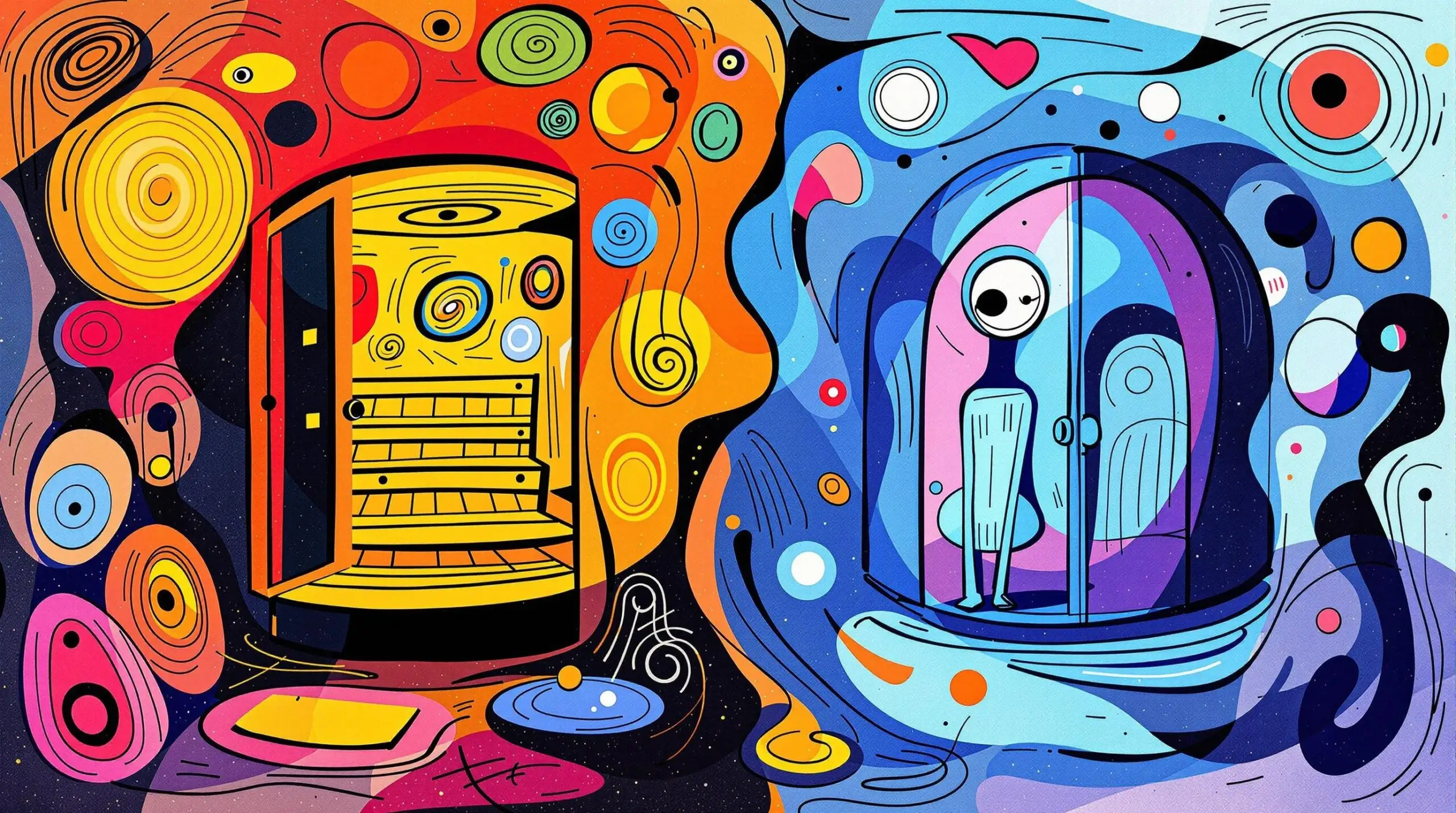Heat vs. Cold: Saunas, Cryotherapy, and Their Anti-Aging Battle
Explore the anti-aging benefits of saunas and cryotherapy in the ultimate battle between heat and cold.

Understanding Heat and Cold Therapy for Longevity
The Ancient Origins and Modern Science of Temperature Therapy
From Finnish saunas to Japanese ice baths, humans have used temperature extremes for health benefits for millennia. Now, science is catching up with tradition. Research shows that both heat and cold exposure can trigger powerful biological responses that may slow aging and extend lifespan. The mechanisms behind these effects are fascinating – and sometimes counterintuitive.
The Science of Heat Exposure and Aging
Heat exposure, particularly through sauna use, creates a mild stress response in the body called hormesis. This beneficial stress activates heat shock proteins, which help repair damaged cells and proteins. Regular sauna users show increased production of growth hormone, reduced inflammation, and improved cardiovascular health. A landmark 20-year study from Finland found that men who used saunas 4-7 times per week had a 40% lower risk of early death compared to those who used them once weekly.
Cold Therapy and Cellular Resilience
Cold exposure stimulates different but equally impressive biological responses. Cryotherapy triggers the production of brown fat – metabolically active tissue that helps regulate body temperature and metabolism. Cold exposure also increases norepinephrine levels, which can reduce inflammation and improve immune function. Studies show that regular cold exposure may increase longevity by activating sirtuins, proteins that regulate cellular health and aging.

The Current Landscape of Temperature Therapies
Modern Applications of Heat Therapy
Today’s heat therapy options range from traditional saunas to infrared chambers. Infrared saunas, operating at lower temperatures than traditional ones, penetrate deeper into tissues. They’ve shown promising results for cardiovascular health, with studies indicating improved blood pressure and arterial compliance. The temperature sweet spot appears to be between 80-100°C (176-212°F) for traditional saunas, with sessions lasting 15-30 minutes.
Contemporary Cold Therapy Methods
Modern cold therapy has evolved beyond ice baths. Whole-body cryotherapy chambers, which use nitrogen gas to achieve temperatures as low as -140°C (-220°F), offer intense cold exposure in controlled conditions. Cold plunges and ice baths remain popular, with temperatures typically between 10-15°C (50-59°F). The Wim Hof Method has popularized cold exposure, combining it with breathing techniques for enhanced benefits.
Comparing Heat and Cold Therapy Effects
Cardiovascular Benefits
Heat therapy excels at improving cardiovascular health. Regular sauna use reduces the risk of heart disease by 23% and stroke by 27%. Cold therapy offers different cardiovascular benefits, including reduced inflammation and improved blood vessel function. The contrast between hot and cold exposure can strengthen blood vessels’ ability to dilate and contract, improving overall vascular health.
Metabolic Impact
Cold exposure significantly boosts metabolic rate – up to 350% during intense shivering. This increases calorie burn and can improve insulin sensitivity. Heat exposure enhances metabolic health differently, improving glucose regulation and increasing growth hormone production by up to 200-300% after a single session.
Mental Health and Cognitive Function
Both temperature extremes affect brain health. Heat exposure increases BDNF (Brain-Derived Neurotrophic Factor), supporting neuron growth and protection. Cold therapy boosts dopamine levels by 250%, improving mood and mental clarity. Regular practice of either therapy shows promising results for depression and anxiety reduction.
Practical Implementation Strategies
Heat Therapy Protocol
- Start with 10-15 minute sessions at lower temperatures
- Gradually increase to 20-30 minutes at 80-100°C
- Use 2-3 times per week initially
- Stay hydrated before and after sessions
- Consider combining with gentle stretching
- Monitor heart rate and comfort level
Cold Therapy Protocol
- Begin with 30-second cold showers
- Progress to 2-3 minute cold immersion
- Maintain water temperature between 10-15°C
- Practice controlled breathing techniques
- Never practice alone initially
- Warm up naturally afterward
Safety Considerations and Contraindications
Heat Therapy Precautions
Heat exposure isn’t suitable for everyone. Pregnant women, people with heart conditions, and those with fever should avoid saunas. The risk of dehydration and overheating is real – proper hydration before and after sessions is crucial. Blood pressure medications may require adjustment when starting regular sauna use.
Cold Therapy Safety
Cold exposure carries its own risks. People with heart conditions, Raynaud’s syndrome, or blood pressure issues should consult healthcare providers first. The shock of cold immersion can trigger a diving reflex, affecting heart rate and breathing. Start gradually and never practice alone until experienced.
Optimizing Benefits Through Combination Therapy
Contrast Therapy
Alternating between heat and cold exposure may provide enhanced benefits. Research suggests this practice improves circulation, reduces inflammation, and accelerates recovery. A typical protocol might involve 3-4 cycles of 10 minutes heat followed by 1 minute cold exposure.
Timing and Frequency
The body responds best to regular, consistent exposure to temperature extremes. Studies indicate that 2-3 sauna sessions per week provide optimal longevity benefits. Cold therapy shows similar patterns, with regular brief exposures outperforming occasional long sessions.
Future Developments in Temperature Therapy
Emerging Technologies
New technologies are making temperature therapy more accessible and precise. Smart saunas can monitor vital signs and adjust temperatures automatically. Portable cold therapy units offer controlled exposure without the need for ice. Research into targeted temperature therapy for specific health conditions is ongoing.
Research Directions
Scientists are investigating the molecular mechanisms behind temperature therapy’s anti-aging effects. Current research focuses on heat shock proteins, brown fat activation, and cellular stress responses. Understanding these mechanisms could lead to more effective protocols and applications.
Key Takeaways for Longevity Benefits
- Regular sauna use significantly reduces mortality risk
- Cold exposure activates longevity-promoting pathways
- Consistent practice provides better results than occasional use
- Both therapies complement other healthy lifestyle practices
- Individual response varies – personalization is important
- Safety precautions are essential for both methods
The battle between heat and cold therapy for anti-aging effects isn’t really a competition – both offer unique and complementary benefits for longevity. The key is finding the right balance and application method for your individual needs and circumstances. Regular, safe practice of either or both methods can contribute significantly to a longer, healthier life. As research continues and technology advances, our understanding of these ancient practices will only deepen, potentially revealing even more powerful applications for human health and longevity.